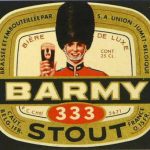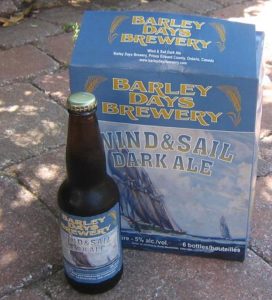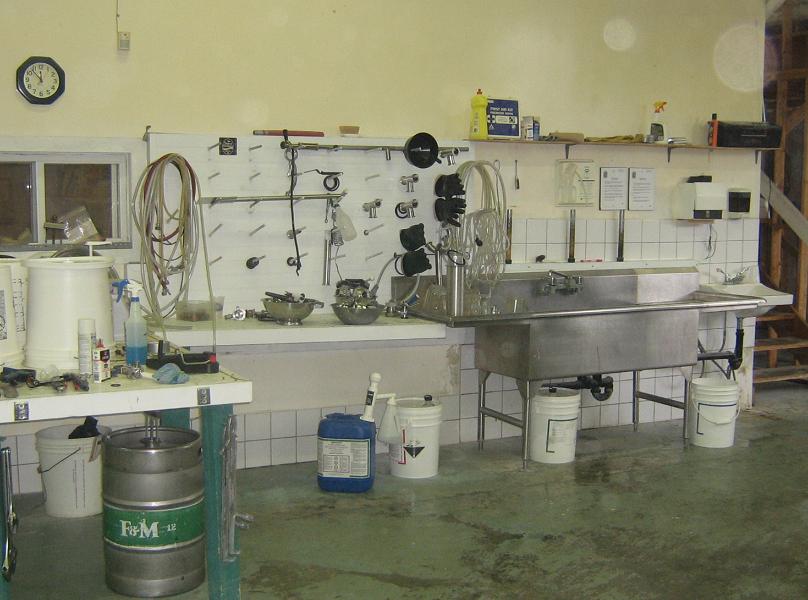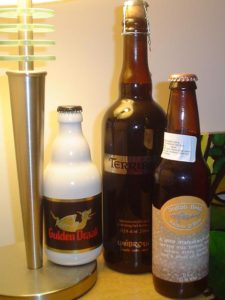 It is instructional to live next to a bigger neighbour. As long as they don’t attack you… any more. And by bigger I mean the most influential state in the most powerful nation in the history of the western world. Which is to say I can see a slice of New York state from my office window, peeking back at me out there about ten miles to the south. So we get the TV and radio in addition to the general social media onslaught. And – who knew? – turns out it’s Thanksgiving week and today is Thanksgiving Day! Their Thanksgiving. We Canadians naturally give our thanks for the harvest at harvest time. And we keep it to a wholesome day or two. And find things to do like yard chores. Our pals to the south? It’s like they just discovered treats… to eat!! Even though Halloween was just three weeks ago. Any advice you can offer explaining it all will be most welcome. In local news, the basil is up as illustrated. I am aiming for a wrap around 12 month tiny crop of something or other now that there’s a grow op in my life while some tasty stuff is likely still alive out there under the row covers even with the -9C temps the other night. Jings. Gotta start thinning soon.
It is instructional to live next to a bigger neighbour. As long as they don’t attack you… any more. And by bigger I mean the most influential state in the most powerful nation in the history of the western world. Which is to say I can see a slice of New York state from my office window, peeking back at me out there about ten miles to the south. So we get the TV and radio in addition to the general social media onslaught. And – who knew? – turns out it’s Thanksgiving week and today is Thanksgiving Day! Their Thanksgiving. We Canadians naturally give our thanks for the harvest at harvest time. And we keep it to a wholesome day or two. And find things to do like yard chores. Our pals to the south? It’s like they just discovered treats… to eat!! Even though Halloween was just three weeks ago. Any advice you can offer explaining it all will be most welcome. In local news, the basil is up as illustrated. I am aiming for a wrap around 12 month tiny crop of something or other now that there’s a grow op in my life while some tasty stuff is likely still alive out there under the row covers even with the -9C temps the other night. Jings. Gotta start thinning soon.
Which reminds me of beer. Not. So what is up in beer? Well, for starters, the call for papers for Beeronomics 2024 has gone out:
The 2024 Beeronomics Conference will take place at University of Milan Bicocca, Italy, 19-22 June. Main panels and sessions will be held at the University of Bicocca main campus located in the heart of the city. The Conference Organising Committee, led by Christian Garavaglia, welcomes all high-quality research on the economics of beer and brewing. With a strong interest in interdisciplinary research, we are looking for submissions …
It-lay! That’d be nice in June. Maybe something for Al can be whipped up via AI so I can pretend to be clever enough. Speaking of research, Gary has uncovered facts on the heretofore unknown background of the 1950s English beer writer, Andrew Campbell – stumping even Boak and Bailey who had looked at the mystery some years ago:
It is interesting that they mention theatre – why this occurred to them is not explained. The skein was evidently felt inconclusive, as they repeat that Andrew Campbell was possibly a pseudonymous figure. In fact Andrew Campbell who wrote The Book of Beer was quite real. And there was a theatrical connection.
Speaking of Boak and Bailey, they took a bit of an unsual turn in the road this week as they, the keen observers of others, became something of their own subject matter when they took a family trip to an old favourite Somerset cider farm with a restaurant of sorts attached:
When we entered, Jess immediately said, “This feels like a German beer hall.” And she was right. Not a historic one – the kind you find in a post-war block, or out in the sprawl, or in a neat little village. It’s something to do with all the polished wooden surfaces, perhaps. Or the pervasive smell of roast pork. Or the people: there were plenty of sturdy looking country folk digging into heaped plates. If it wasn’t Bavaria of which it reminded me, then it was one of those diners Guy Fieri visits on Diner, Drive-Ins and Dives.
A great bit of writing. And Matty C has taken on the task of rehabilitating the phrase “reverse creep” with his piece in What’s Brewing, an organ of CAMRA, on the new lower ABV trend in UK beer:
Prior to the legislation’s introduction, breweries would have received a discounted rate for drinks rated at 2.8 per cent ABV or lower. Under the new system it has been extended to account for drinks rated at 3.4 per cent or less. The savings that can be made will likely encourage producers to focus on drinks that are lower in alcohol and therefore, in the government’s eyes, carry less long-term health risks. Encouraging news for a market where younger customers are increasingly focused on mindful consumption and wellness.
The cost implications are significant: “…if, over a year, a small brewery produces 5,000 hectolitres (880,000 pints) of a beer it has reduced from 3.5 to 3.4 per cent, it will make a saving of £211,400.” Moo. Lah. Stonch finds the effect of the tax policy depressing. Colin understands the policy is not the main cause of the lower strength beers. Lots of factors at play but hard to not see this as an opportunity.
I don’t usually go for brewery bios given there too often is a bit of an appropriation or maybe just mimickery at play. But in this piece about a Czech focused brewery in small town Texas of all places, Ruvani de Silva explains the local authenticity:
“The concept of a Czech lager brewery made a lot of sense in Bell County with its rich Czech heritage and the Czech Heritage Museum and Genealogy Center nearby,” he says. “The more I discovered and learned about Czech lager, the more I fell in love with it… I’ve learned so much about my family history and our connections within the community since starting the brewery,” he says. “I’m always probing my grandmother for more stories.” Martinec was inspired to play Czech polka in the brewery after discovering a collection of records in his grandmother’s side table. “They belonged to my great-grandmother and grandfather—my grandmother didn’t even know they were there,” he says. “Now regulars will come by and donate polka records, too.”
Before we go further, say to yourself “soon… soon I will know a lot more about bottle caps” because it is true… because Liam wrote all about it from an Irish perspective:
Before his invention there were other methods of closing bottles, one of the most popular and historic being the plain cork bung of course, and other metal closer had existed but none were quite as strong and easy to apply as Painter’s. His crimp-edged, strengthened metal caps clamped on the edge of specially made bottles with a cork liner between the cap and bottle rim ensuring an airtight fit. These caps were easy to apply and remove and would go on to revolutionise the drinks industry around the world. They were also disposable – they were never designed for reuse – a clever way of ensuring a steady income for those involved in their manufacture.
Next, Katie Mather is on to the second installment of her series on packaged foods called “Process” and this week considers the humble oven fry:
The brand of oven chips you had at teatime was a status symbol when I was a kid. McCain’s Home Fries were the holy grail—if you were having those with your Turkey Drummers, you’d really made it. It’s really strange, I didn’t consider oven chips and deep fryer chips and chippy chips as the same thing. It didn’t occur to me until much later on in life that oven chips were meant to be approximations of the soggy, vinegar-coated potato hunks I was used to from Sam’s Bar on Morecambe seafront. Don’t get me wrong, I loved both of them. But they just weren’t the same food at all. They didn’t even speak the same language.
I always find global references to McCain’s brands odd as it’s from my neck of the woods in the Canadian Maritimes and I even went to undergrad with a McCain.* One of the few dynasties which keeps the lights on in New Brunswick.
Courtney Iseman wrote about the SAFE Bar Network, a program that a nonprofit working with alcohol-serving venues on bystander intervention training in anticipation of one ugly downside of the impending festive season:
…it is also a good time for these conversations because we’ve officially arrived at the holiday season, and this time of year can really crank up the already-intense situation at many bars and restaurants in terms of parties and customers’ drinking and behavior. I know this is unfortunately an impossible wish, but I do hope folks working in bars and breweries and such make it through these season as safe and happy as can be, and—perhaps more realistically—I hope more and more venues see the light and bring in training like SBN.
The Shadowy Portman Group has popped up its head and this time it isn’t complaining about cartoony labels or, you know, anything related to BrewDog. This week it’s defending the booze trade against being lumped in with unhealthy smokers and gunky** processed food fans in a wide ranging study of the costs of unhealthy lifestyles to the UK economy:
The Portman Group, an alcohol industry trade body, said a crackdown on alcohol was unnecessary because most adults drank moderately. The health groups’ proposals, including minimum unit pricing, were “disproportionate and inappropriate”, said Matt Lambert, its chief executive. “Significant progress has been made to tackle harmful drinking in recent years, thanks in part to schemes funded by the alcohol industry, and it is counterproductive to try to prevent further cooperation between the government, industry and third sector organisations on these issues.
They make a reasonable point up there as reported in The Guardian – consult your Hornsey if you need to but we are clearly built to digest alcohol but no one ever rationally claimed a ciggie isn’t a coffin nail. Interesting to note The Times raises another source of health care worry: toxic doctors! Interesting that they are alleged to cause 11,000 deaths per year in the UK while the booze causes just over 9,000. Lesson: don’t forget to take your drink!
In high school, 44 years ago or so, we had a Swedish exchange student on the soccer team and he taught some of us about eating spruce tips. The winter beer Jeff featured this week brought that all back to me:
The brewery puts in a lot of work to create that subtle sweetness. Beginning in May or June, depending on the year’s winter, Dan and members of the brewing and restaurant staff head off to a forest that is just west of town. They harvest sustainably so the trees aren’t harmed—they even need a permit—which means more time. The trees must be a certain height to harvest, and they can’t pick too much of the new growth. “We bring a load of grain bags out with us—it’s beautiful,” he said. “I love it.” It takes more than one visit to collect 200 pounds of tips, which they freeze.
Mmm… tree flavour. It’s the new thing. Stan also wrote about another way to get more tree into your diet:
“I think the thing I love most about the beer is that it certainly makes me feel something, often several things. The time and effort spent harvesting the cedar with my friend realigns my heart to a deeper connection and purpose in brewing. I can feel the sun on my face as I’m reaching to trim a branch in the cool autumn air. I can feel the wind on my face as I give thanks to the grove of trees that play such an important part in the entire experience. Something in me awakens each time I sip.”
Remember how I mentioned that the Russian government nationalized the local branch of Carlsburg, Baltika? Things still getting worse for those involved:
Police and Federal Security Service (FSB) agents carried out more than a dozen searches at offices affiliated with Baltika in St. Petersburg, the local news website Fontanka reported Thursday, citing anonymous sources. Two unnamed Baltika executives were charged with abuse of trust and large-scale fraud, according to Fontanka. The state-run TASS news agency later identified the detained executives as Baltika president Denis Sherstennikov and vice president Anton Rogachevsky, citing a law enforcement source.
Yikes. And I know I include something from Pellicle every week but they really do stand heads and shoulders above other publications. This week, a portrait by Neil Walker of The Coopers Tavern, a modest old pub and the beer it serves:
In front of me sits my deep-gold pint of Joule’s timeless pale ale, glowing and topped with a bright white head of foam, which creates halos down the glass as I sip. But, really, this is a beer for glugging; a subtle well-balanced bitter, with a delicious caramel undertone from the pale tipple malt, a foil for the floral, drying, hop character. The overall impression is of a bittersweet, incredibly drinkable ale, a balm for dry workers’ throats which slips down pint after pint. Underpinning the beer is the same mineral-rich water which made the brewery’s pale ales so sought after a century or so ago, drawn from an ancient Triassic aquifer.
Excellent. A decendant of the Brimstone Alehouse of the 1680s. At another snack bracket appears to be The Devonshire, a big London pub and restaurant complex… oh, sorry… a butchery, bakery, a pub, restaurant and asado complex. What’s an asado? Nick Lander explains:
Welcome to London’s first asado, where the food is cooked entirely over wood embers. Carroll admitted that it had been harrowing at times, assuring everyone from the landlords to numerous representatives of Westminster Council that the process would work and would be safe. Simply, the logs are burnt and then the ingredients are cooked over the embers. It is this process that has made a name for the likes of Asador Etxebarri in Spain, Burnt Ends in Singapore and Firedoor in Sydney, all of whose chefs have been consulted by Carroll and Rogers.
And finally, in their monthly newsletter and for the double, Boak and Bailey have you all pegged. There’s no wiggling out of this one:
If we say that interest in craft beer in the UK began to increase from around 2007 (when we started this blog – a symptom, not a cause) and peaked in around 2014, when our book Brew Britannia came out, that’s plenty of time for a full cycle of hype to play out. There’s a generation of people who have made ‘being into beer’ part of their identity. That includes people who used to blog; people who started breweries; and people who’ve ended up as middle-aged managers in the industry, having started on the frontline a decade ago. Now, they’re getting old.
ZINGGGGG! They’re shit talking us. Deservedly. So here we are, at the end. The time of the sales, the mergers, the moves. Maybe just the beginning of the end but, yes, I feel bad everytime I read an investment announcement of one sort or another. Ouch. No, not commenting on what they said. Just reached over for the mug of tea. Everying aches now. ‘Cause I’m ooooollllld.
Other than that, we are done. Remember, ye who read this far down to see if I have edited these closing credits and endnotes (as I always do), you can check out the many ways to find good reading about beer and similar stuff via any number of social media and other forms of comms connections. But beware! Mr. Protz lost his Twex account five weeks ago and still hasn’t recovered his 27,000 followers. And Boak and Bailey declared they will #QuitTheTwit at the end of the year. Update on my emotional rankings? Now, for me Facebook remains clearly first (given especially as it is focused on my 300 closest friends and family) then we have BlueSky (83) rising up to maybe pass Mastodon (905) then the seemingly doomed trashy Twex (4,427) hovering somewhere above or around Instagram (161), with unexpectly crap Threads (42) and not at all unexpectedly bad Substack Notes (1) really dragging – and that deservedly dormant Patreon presence of mine just sitting there. Still trying to figure out the Threads and BlueSky distinction but at this point Threads seems more corporate. Seven apps plus this my blog! That makes sense. I may be multi and legion and all that but I do have priorities and seem to be keeping them in a proper row. All in all I still am rooting for the voices on the elephantine Mastodon. And even though it is #Gardening Mastodon that still wins over there, here are a few of the folk there discussing beer:
Alan McLeod | A Good Beer Blog (… me…)
Stan Hieronymus | The Man!
Boak & Bailey | The B² experience
Curmudgeon Ale Works | Jonathon is Brewing
Katie Mather | Shiny Biscuit and Corto
David Jesudason | “Desi Pubs” (2023) author
BeoirFest | They say “Let’s Talk Beer”
Ron Pattinson | The RonAlongAThon Himself
Al Reece AKA Velky Al | Fuggled
Jennifer Jordan | US hops historian
Andreas Krennmair | Vienna beer and lager historian
Beer Ladies Podcast | Lisa Grimm and colleagues
The Bar Towel | Toronto’s chat zone for beer lovers
Chicago Beer Society | Folk in Chicago getting social over beer
Jay Brooks | Brookston Beer Bulletin
Joe Stange | Belgian beer expert, beer magazine editor
Cider Bar | Barry makes Kertelreiter cider
Laura Hadland | CAMRA historian and beer writer
Brian Alberts | US beer historian
Jon Abernathy | The Beer Site
Maureen Ogle | US Beer Historian
Lars Garshol | Norwegian Beer Historian and Kveik Hunter
James Beeson | Beeson on Beer
Carla Jean | MAINER!!!
Thandi Guilherme | Beer Ladies Podcast Co-host
Lisa Grimm | Beer Ladies Podcast Co-host
Roy of Quare Swally | Beery ramblings from Northern Ireland
Rob Talksbeer | Podcaster and Youtuber
Anthony Gladman | UK Drinks Writer
Jeff Alworth | Manna Of Beervana
Northwest Beer Guide | Fairly self explanatory… but not NW Latvia…
Evan Rail | Prague based GBH editor, freelance writer, NYT etc.
Todd Alström | 50% of the Alströms
Jacob Berg | Beer talking librarian
Anyone else? Anywhere else? Yes, you also gotta check the blogs, podcasts (barely!) and even newsletters to stay on top of things including the proud and public and certainly more weekly recommendations from Boak and Bailey every Saturday and Stan at his spot on those Mondays when he is not SLACKING OFF! Look – I forgot to link to Lew’s podcast. Fixed. Here’s a new newsletter recommendation: BeerCrunchers. And get your emailed issue of Episodes of my Pub Life by David Jesudason on many Fridays. And Phil Mellows is at the BritishBeerBreaks. Once a month, Will Hawkes issues his London Beer City newsletter and do sign up for Katie’s now much more occassional but always wonderful newsletter, The Gulp, too. Ben’s Beer and Badword is back with all the sweary Mary he can think of! And check out the Atlantic Canada Beer Blog‘s weekly roundup. There is new reading at The Glass. Any more? Yes! Check to see the highly recommended Beer Ladies Podcast. That’s quite good. And the long standing Beervana podcast . There is the Boys Are From Märzen podcast too and Ontario’s own A Quick Beer. There is more from DaftAboutCraft‘s podcast, too. All About Beer has introduced a podcast… but also seems to be losing steam. And there’s also The Perfect Pour. Plus follow the venerable Full Pint podcast. And the Craft Beer Channel on Youtube and remember BeerEdge, too, and The Moon Under Water… if you have $10 a month for this sort of thing… I don’t. Pete Brown’s costs a fifth of that. There was also the Beer O’clock Show but that was gone after a ten year run but returned renewed and here is the link!
*…not all that rare… also a Labatt as well as Anne Murray’s neice and someone whos godparent was claimed to be the Pope. Et cetera. Et cetera. Lucy MacNeil was in a dorm next to my pal, too. LUCY!! It’s all just one town out there. Go to the tavern for lunch? There’s a member of cabinet. Hit the late night dance club? There is your local MP… dancing with not Mrs. Local MP. Oh dear. Not smart.
**Ouch! Katie Mather just hit me!!!



 What to call these beers? For the last few years, brewers have been
What to call these beers? For the last few years, brewers have been  Here is a hint when you are traveling. If, after a tiring 600 km drive (to be followed the next day by another 600 km drive) you notice contract street sweeping equipment in the parking lot, get a new hotel. Street sweepers come and go in the night, you see. After idling their massive engines for fifteen minutes or so. It was like sleeping in a public works depot.
Here is a hint when you are traveling. If, after a tiring 600 km drive (to be followed the next day by another 600 km drive) you notice contract street sweeping equipment in the parking lot, get a new hotel. Street sweepers come and go in the night, you see. After idling their massive engines for fifteen minutes or so. It was like sleeping in a public works depot.





